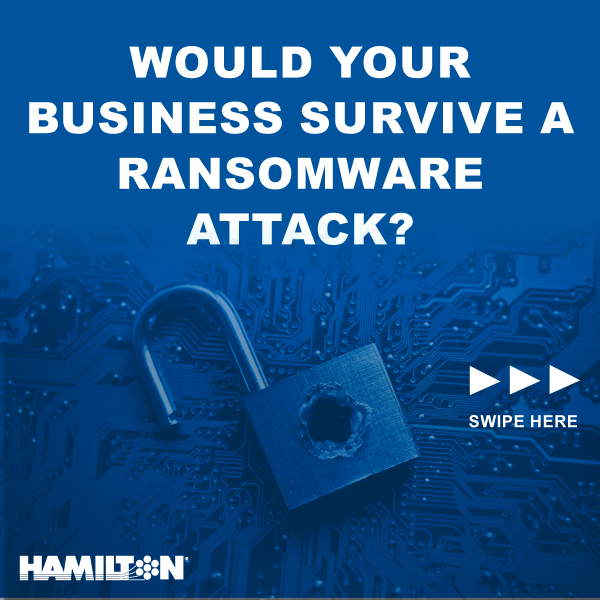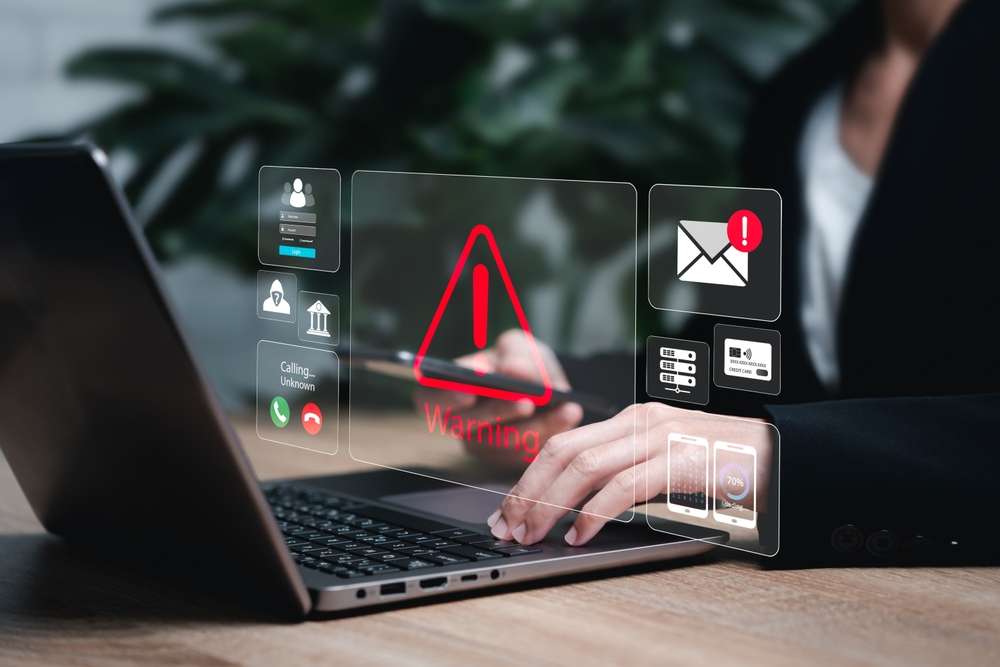Let’s cut to the chase:
When we talk with businesses concerned about ransomware, unfortunately it is no longer a question of, “if”, but rather, “when”.
Ransomware attacks are nothing new. In fact, it can feel like a business is hit with one nearly every day.
Because they can happen regularly they should be taken very seriously. Ransomware attacks are far more lasting than a mild inconvenience, with the consequences including:
- Compromised and/or Lost Data
- Costly Repairs
- Disrupted Supply Chains
- Irreparable Harm to Your Operation
That may feel daunting, but the reality is that if your operations rely on network connectivity, ransomware is a threat. In fact, studies show that 60% of businesses that are compromised by ransomware are out of business within six months[1].
Again, daunting but a reality.
That does not mean your business is helpless in facing these issues. Quite the opposite, in fact. But it does mean that now is an opportune time to start formulating a cybersecurity plan – or updating your existing one.
Does having a cybersecurity plan still matter if you are not well-versed in the “tech stuff”? The answer is a resounding “Yes”.
Think of a cybersecurity plan like having a fire extinguisher in your building. While no team wishes for a fire to break out, having an established, understood plan to quickly respond to ransomware threats is an absolute must. After all, a fire is the least opportune time to realize you lack the tools or know-how for extinguishing it.
So, how do you know if your business is prepared if a ransomware attack were to hit today?
Our security experts offer four key pillars to keeping your info and team secure against incoming threats.
From first line of defense to cybersecurity defense and recovery:
1. TRAIN YOUR TEAM
How frequently does your business train or re-train its team members on cybersecurity?
Oftentimes, your team is the first line of defense when your business is targeted for a cyber threat. Ransomware attacks throughout time have often used social engineering tactics like phishing and impersonation to penetrate a business’ defenses, and regular training helps keep a team aware and vigilant to these types of tactics.
Simply put, a team that is “in the know” is a more secure team.
When it comes to cybersecurity, training and educating your people is one of the single-most effective – and affordable – action items a business can implement.
Our advice:
Conduct formal security training on an annual basis. A trusted technology partner that specializes in cybersecurity can help you with comprehensive training that includes tests/assessments to ensure the information is understood. For phishing/social engineering tests, do these on a more frequent basis – quarterly tests are a great way to keep security top-of-mind!
2. HAVE A STRONG EDR
Endpoint Detection and Response (EDR) is an integrated security solution that uses advanced algorithms and real-time monitoring to analyze individual user behaviors. It also collects data in order to detect threats. These systems automatically respond to the detected threats to remove or contain them, and notifies your security team.
Our advice:
EDR helps ensure your team and data stay safe with 24x7monitoring — making it an absolute must for any modern business. If you are new to EDR systems, consider consulting with a security partner like Hamilton to get started. We can help you lay down the groundwork for cybersecurity, no matter your experience, current tech setup or budget. If your team already has an EDR system set up, do a monthly check-up to ensure the system is up to date and working correctly.
3. ESTABLISH AN INCIDENT RESPONSE PLAN (IRP)
Just like your business has a plan for keeping your team safe in the case of a fire, your business needs an Incident Response Plan. Your IRP will be unique to your business, but will need a reliable, actionable answer to the question of “What do we do if we’re hit with a cybersecurity attack?”
When you consider how your team responds to a ransomware attack, you will need to also understand your RTO – Recovery Time Objective – in order to answer the questions like, “How long can I afford to have my system down?” and “How quickly can we recover from an attack?”.
Our advice:
When you set up your IRP, make sure you consult with a security expert to make sure your bases are effectively covered. Make the plan readily accessible to all team members and have management review it on a quarterly basis for necessary adjustments.
4. IF ALL ELSE FAILS, USE YOUR BACKUPS!
There is no doubt that your business data is worth protecting. So, when it comes to your backups, do you rely on leaps of faith, or do you have a safety net in place?
Physical backups of all of your data are a powerful final line of defense to keeping your tech and data secured., Keep in mind that while developing your cybersecurity plan, these should not be your first or only response to an attack.
Our advice:
Much like an EDR system, checking on your physical backups monthly helps to make sure your safety net stays intact. Make sure any physical backups are secured, and that your team knows their location and how to access them.
Planning for a ransomware attack and building a response plan does not have to be a daunting process.
If your team does not have a response plan, the best first step to becoming more secure is to get in contact with a cybersecurity consultant like Hamilton. No two business safety plans will look the same. That is why partnering directly with a consultant is crucial—it helps establish a custom system for your business. Your team will be better equipped with the knowledge and infrastructure necessary to keeps your operation secure and successful today, tomorrow, and well into the future.
At Hamilton, we believe your business deserves the best. That is why we deliver better cybersecurity to the marketplace.
We will collaborate directly with you to develop a plan that helps ensure your business stays connected and protected. Because your job is too important to be spent worrying about complicated technology and cybersecurity.
We are proud to provide security upgrades and local, personalized support for a variety of areas within your business, including keeping your data secured and protected through data center services; training your team on cybersecurity; and much, much more!
If you’re looking to upgrade your business security, consider taking a look at our full list of available services.
Contact us today for any questions, or to schedule a free consultation with our Nebraska-based team!
P.S.
Need to keep our cybersecurity reminders handy?
Feel free to download this flipbook!
[1] Source: CybersecurityVentures.com






